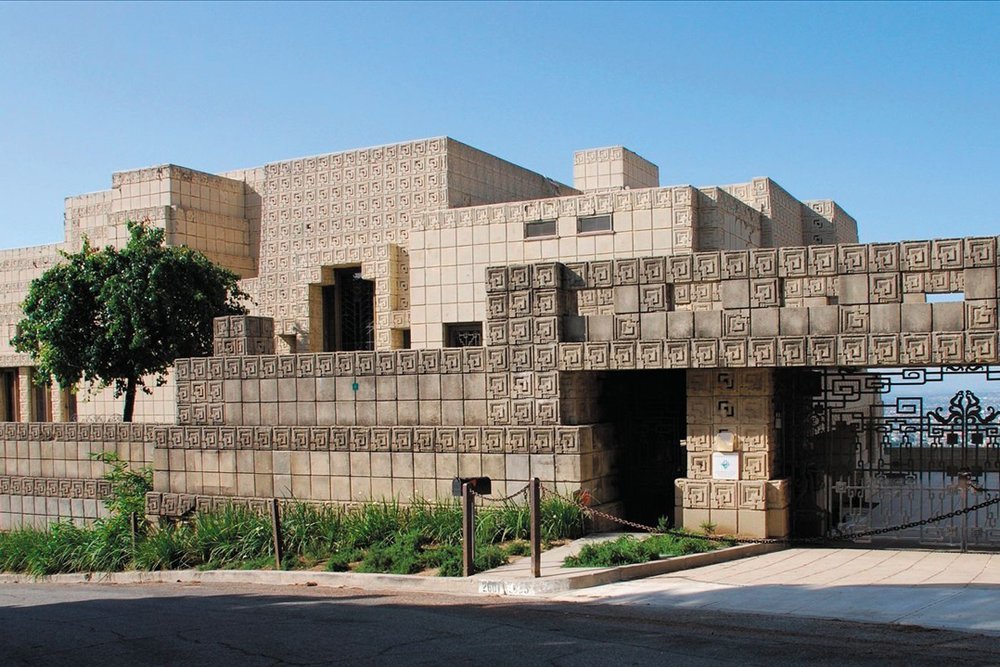#11936. Textured Concrete Facade of Ennis House: Frank Lloyd Wright's Modular Aesthetics
The building presented is a remarkable example of organic architecture created by the famous American architect Frank Lloyd Wright. This is the Ennis House, built in 1924 in Los Angeles and stands as one of the most significant examples of Wright's "textile block" construction.
The facade demonstrates a unique aesthetic where the key element is the relief-patterned concrete blocks with repeating geometric ornaments reminiscent of ancient Mayan motifs. This pattern creates an impressive play of light and shadow on the surface, especially under the bright California sun. The modular block system serves simultaneously as both a structural and decorative element, which is characteristic of Wright's approach to architecture.
The stepped composition of the facade emphasizes the horizontality of the building, while different levels and projections create a visual rhythm and dynamism. The monolithic nature of the concrete structure is slightly softened by the natural element - a tree growing in front of the building, as well as small plantings at the base.
For private home construction, such aesthetics can be adapted using modern materials. The principle of a repeating relief element can be implemented through decorative panels, cladding with geometric patterns, or textured plaster. The key technique is the balance between monumentality and detail, where a structural element becomes a decorative feature. It's also important to consider the interaction of architecture with the landscape, as Wright masterfully did.
